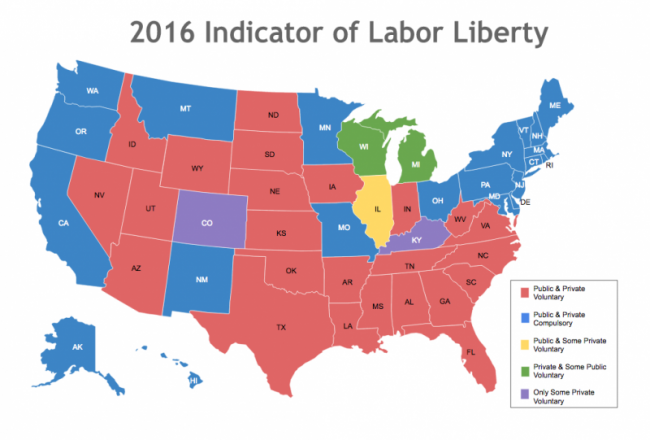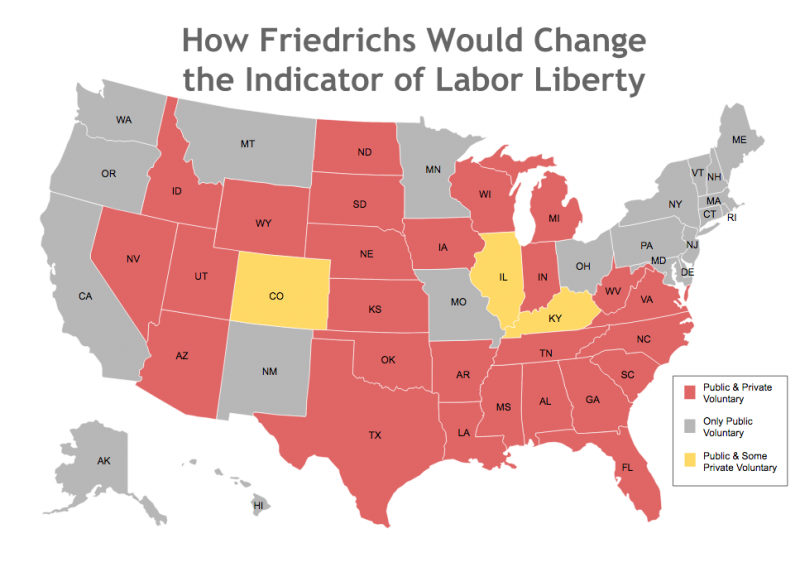Workers Choose or Forced Dues?

A State-by-State Map of Worker Freedom
Increased union leadership accountability, job growth, and better overall economic performance are just a few of the results when states pass right-to-work legislation. So why is it that only half of the states have passed right-to-work in both the public and private sectors?
The Center for Worker Freedom has developed the Indicator of Labor Liberty, outlining the spectrum of right-to-work across the states in both the public and private sectors.
Now, it would make sense that if someone decided against membership within a labor organization they would not have to pay that union anything, especially not the equivalent of around 77 percent of actual members’ dues. However, under the guise of collective bargaining representation, these “fair share fees” are mandatory for both public and private sector workers in 21 states.
Some states have special exceptions in regards to these laws.
West Virginia, listed as an ‘Only Public Voluntary’ state, might see a color shift from gray to red soon. On February 4, 2016, right-to-work legislation was passed in the WV House 54-46. The law no longer requires private-sector workers to pay agency fees as a condition of employment. The state is still tentatively gray, though, because the House expects Governor Earl Ray Tomblin to issue a veto. As of today, even WV private retirees are legally required to pay union fees.*
In 2015, Governor Bruce Rauner of Illinois issued an executive order prohibiting unions from violating free speech by requiring state workers to pay the “fair share fees.” However, the state is not right-to-work and private employees still feel the burden in every paycheck.*
Under the Colorado Labor Peace Act, private workers may be forced to pay the fees if the union wins two majority elections and the employer agrees to a union contract. Public sector workers in the state are required to pay.
Like Colorado, the public and some private workers in Kentucky must pay. However, because of Kentucky’s home rule statute, twelve counties have passed right-to-work and have experienced the benefits firsthand.
If you work in a police or fire department in Wisconsin, you fund a union that you’re not even a member of.
The map below predicts how the U.S. Supreme Court's ruling in Friedrichs v. California Teachers Association could affect the Indicator of Labor Liberty.

To access a printable download of the 2016 Indicator of Labor Liberty, click here. To access a printable download of how Friedrichs would change the map, click here.
The Center for Worker Freedom will continually update this map as new information and legislation occurs. For more information, contact us at phalper@atr.org
*A right-to-work ordinance for private sector workers in Lincolnshire, Illinois was passed on December 14, 2015. Both maps and downloads have been updated accordingly.
*On February 12, 2016, West Virginia became the 25th 'Public & Private Voluntary' state after successfully overriding Governor Tomblin's veto of right-to-work. Both maps and downloads have been updated accordingly.





